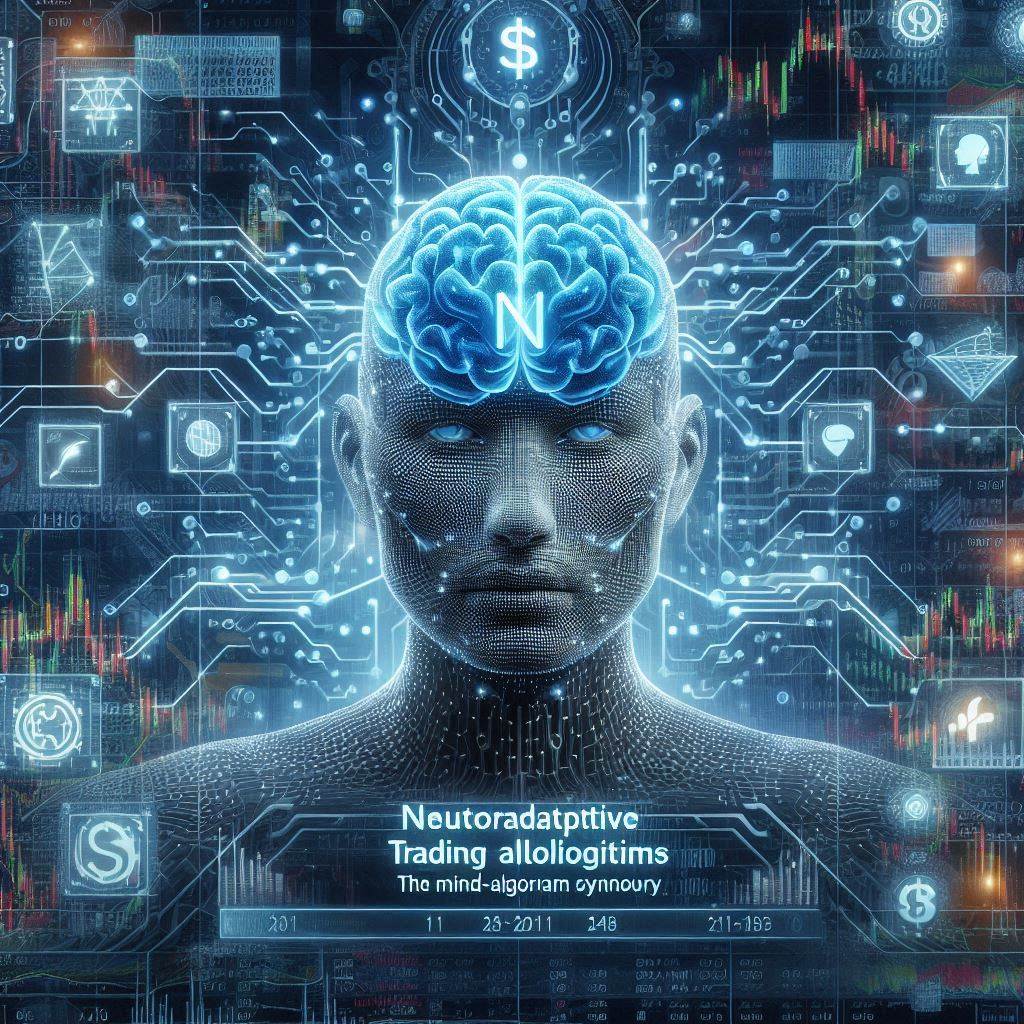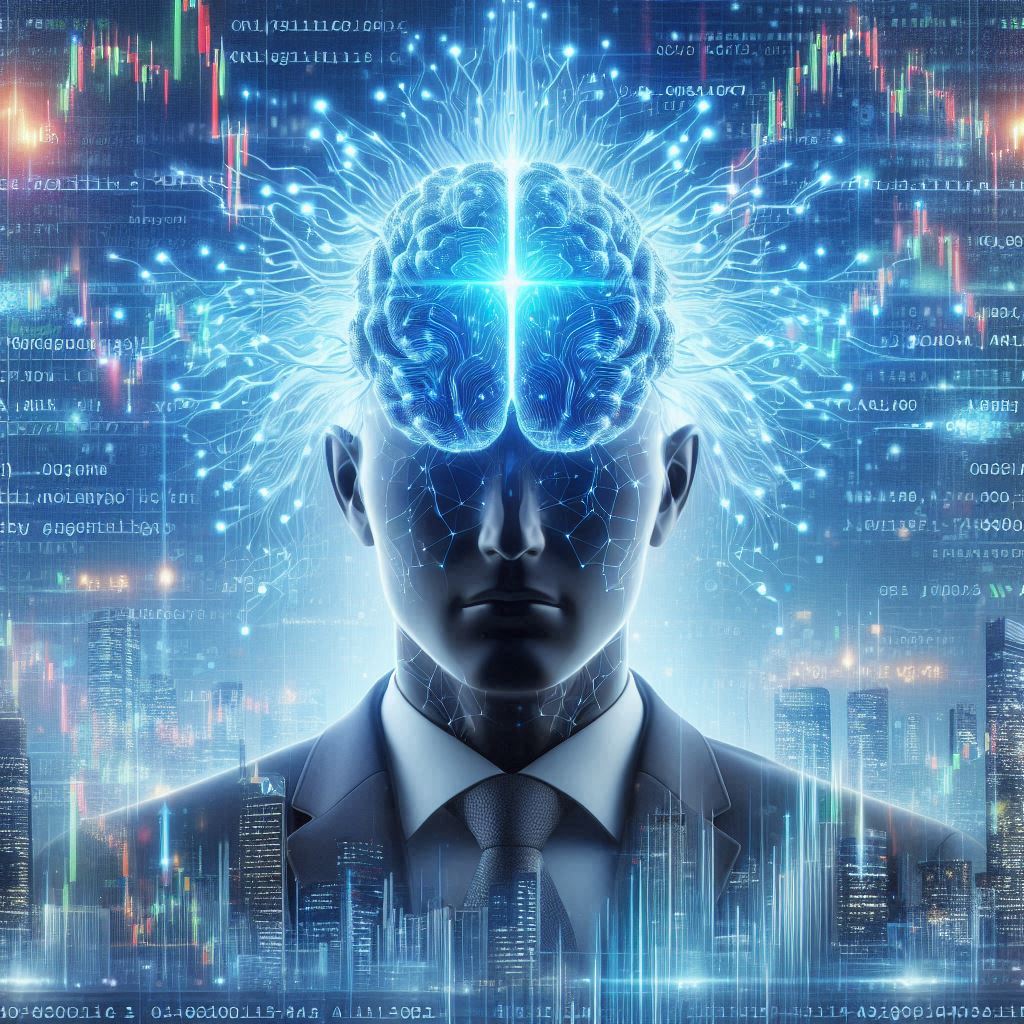Imagine a dancer, whose every movement is guided not just by the rhythm of the music, but also by the subtle signals of their own body — their heartbeat, their breathing, their every thought. This dancer, attuned not only to the music but to their internal state, mirrors the essence of Neuroadaptive Trading Algorithms. These algorithms will not merely respond to market dynamics; they will learn and adapt to the mental states of the trader, using neurological feedback to synchronize decision-making with the ebb and flow of market conditions.

In the world of future prop firms, these neuroadaptive systems will forge a deep connection between the trader’s cognitive state and the market, creating a seamless dance of mind and machine.
1. The Dance of Mind and Machine: A Symbiotic Relationship
- Traditional trading algorithms are like dancers performing to a pre-set choreography — they follow a rigid pattern, regardless of the environment.
- Neuroadaptive algorithms, however, are like dancers who adjust their movements in real-time, sensing and responding to the internal signals of their bodies.
- As the trader’s cognitive state shifts — perhaps due to stress, focus, or calm — the algorithm adjusts its strategy to match, learning from both the market and the trader’s mental feedback.
- For future prop firms, this synergy will lead to more intuitive and efficient trading, where human emotion and algorithmic precision work in harmony.
2. The Mirror: Reflecting Cognitive States
- Traditional systems are like mirrors that only reflect external actions — they show what is happening in the market but not the trader’s internal state.
- Neuroadaptive Trading Algorithms are like mirrors that not only reflect market movements but also the emotional and cognitive states of the trader.
- The algorithm “sees” when the trader is calm or anxious, focused or distracted, and adapts accordingly to optimize trading behavior.
- Future prop firms will use this deep integration between trader psychology and algorithmic trading to enhance both performance and emotional well-being.
3. The Orchestra: A Conductor in Sync with the Musician
- Traditional algorithms are like orchestra conductors who play the same notes regardless of the musician’s temperament or mood.
- Neuroadaptive algorithms are the conductors who are keenly aware of the musician’s (the trader’s) state, adjusting the tempo and style of the music (the strategy) to match the performance.
- When the trader is calm and focused, the algorithm might increase risk exposure, while if the trader is anxious, it could scale back exposure to minimize the chance of emotional decision-making.
- Future prop firms will embrace this flexibility, allowing algorithms to adapt not just to market conditions, but also to the individual nuances of each trader.

4. Objection: “Won’t this make trading too subjective? Couldn’t emotions cloud judgment?”
- Critics may argue that integrating mental states could make the trading system overly subjective and prone to errors.
- Rebuttal: While emotional states can cloud judgment, neuroadaptive algorithms do not rely on raw emotion; they track objective neurological feedback, such as stress levels, cognitive load, and focus, which can be quantified.
- These algorithms understand that certain emotional states — such as high stress — often lead to poor decision-making, and will adjust strategies accordingly, not allowing traders to act impulsively.
- Future prop firms will utilize this data to ensure that trading is always rooted in objective feedback rather than emotional volatility.
5. Objection: “What if the algorithm misinterprets the trader’s emotional state?”
- Some might worry that the algorithm might misread the trader’s internal state, leading to wrong adaptations.
- Rebuttal:Neuroadaptive algorithms will not just track isolated emotional states but will continuously monitor and adapt through ongoing feedback loops.
- If the system detects inconsistencies in the trader’s response — such as erratic shifts in focus or stress levels — it will recalibrate, ensuring that adaptations are accurate.
6. The Pulse: Sensing the Heartbeat of the Market
- Traditional algorithms can only feel the pulse of the market, reacting to price changes and volume shifts.
- Neuroadaptive systems feel the pulse of both the market and the trader. They take into account not just the data points from the market but also the neurological feedback from the trader’s body.
- Like a skilled conductor sensing the heartbeat of an orchestra, these algorithms respond to both external and internal rhythms to create the most effective trading response.
- For future prop firms, this deep integration of market and trader data will provide a more holistic approach to decision-making.
7. The Compass: Navigating Through Mental Landscapes
- Traditional algorithms are like a compass that points north, regardless of the terrain or the traveler’s condition.
- Neuroadaptive algorithms are like compasses that adjust based on the terrain and the traveler’s state.
- When the trader is mentally fatigued or stressed, the algorithm becomes more conservative, navigating them toward safer, more measured decisions.
- In contrast, when the trader is focused and in flow, the algorithm allows for more aggressive strategies, guiding the trader toward potential opportunities.
- Future prop firms will rely on these algorithms to ensure that traders are always following the optimal path for both their mental state and the market’s movements.
8. The River of Decision: Continuous Flow and Adaptation
- Traditional algorithms are like a river flowing along a fixed path, regardless of the rocks, whirlpools, or bends in the journey.
- Neuroadaptive algorithms are like a river that adjusts its course based on both external currents (market forces) and internal conditions (the trader’s mental state).
- This allows traders to navigate through rough market waters while also ensuring their mental well-being is maintained.
- Future prop firms will integrate these systems to keep the trading experience fluid and adaptive, with fewer pitfalls and more opportunities for success.
9. The Synergy: Enhanced Performance and Emotional Resilience
- Neuroadaptive Trading Algorithms provide a deep symbiosis between human cognition and machine intelligence, ensuring that trading is not just about numbers but about understanding the trader’s mental landscape.
- These systems will help future prop firms not only optimize profits but also enhance emotional resilience, ensuring traders perform at their peak without burning out.
Neuroadaptive Trading Algorithms will be the ultimate fusion of human intelligence and artificial precision, enabling a new era of trading where algorithms learn to adapt not just to market conditions but also to the mental and emotional states of traders.
For future prop firms, this integration will create a new paradigm of trading — one where traders are more in tune with their strategies, more resilient in the face of market volatility, and more likely to succeed over the long term.




